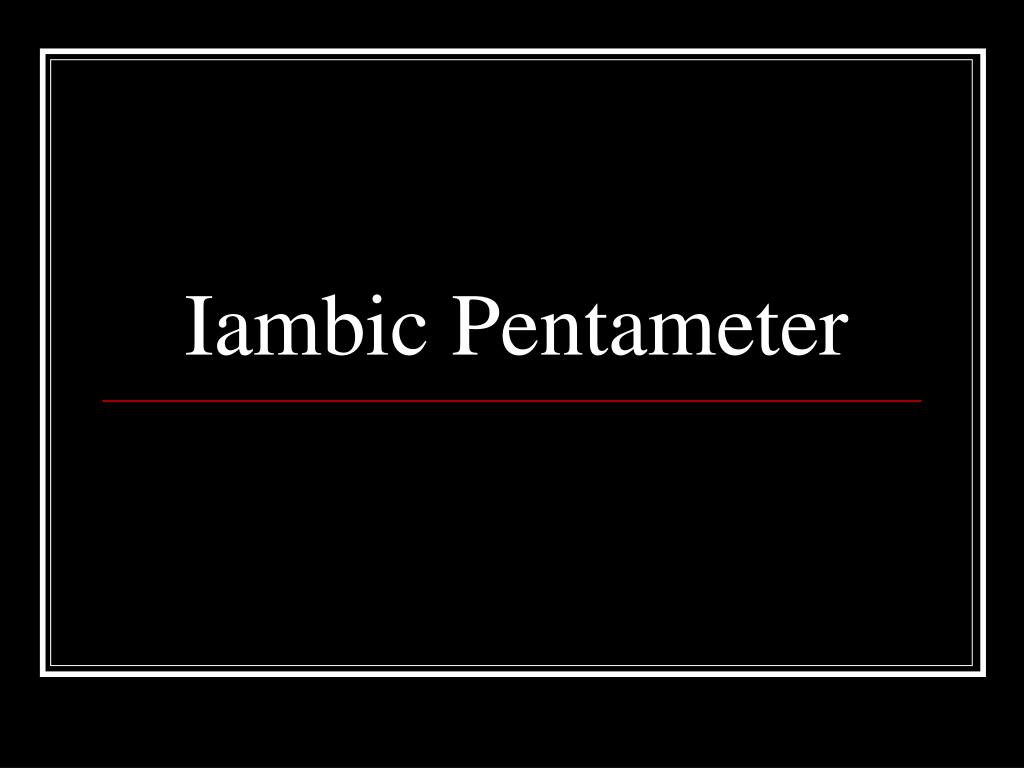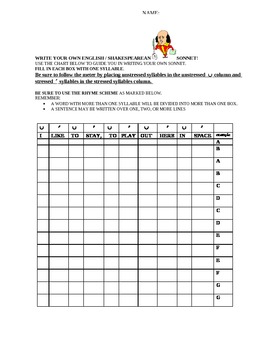

In general a caesura acts in many ways like a line-end: inversions are common after it, and the extra unstressed syllable of the feminine ending may appear before it. This line also has a trochaic inversion of the fourth foot, following the caesura. Here, the rhythm is : da DUM | da DUM | da DUM || DUM da | da DUM | da

One of Shakespeare's most famous lines of iambic pentameter has a weak ending: To be, or not to be: that is the question. Another common departure from standard iambic pentameter is the addition of a final unstressed syllable, which creates a weak or feminine ending.

The first foot, on the other hand, is the most likely to change, often in a trochaic inversion. Iambic pentameter must always contain only five feet, and the second foot is almost always an iamb. There are some conventions to these variations, however. We can notate the scansion of this as follows:Īlthough strictly speaking, iambic pentameter refers to five iambs in a row (as above), in practice, poets vary their iambic pentameter a great deal, while maintaining the iamb as the most common foot. The following line from John Keats' ode To Autumn is a straightforward example: To swell the gourd, and plump the hazel shells In this notation a line of iambic pentameter would look like this: x We can notate this is with a ' x' mark representing an unstressed syllable and a ' /' mark representing a stressed syllable (for a more detailed discussion see the article on Systems of Scansion). We could write the rhythm like this: daĪ line of iambic pentameter is five of these in a row: da A Simple ExampleĪn iambic foot is an unstressed syllable followed by a stressed syllable. Iambic pentameter is among the most common metrical forms in English poetry: it is used in many of the major English poetic forms, including blank verse, the heroic couplet, and many of the traditional rhymed stanza forms. Iambic rhythms come relatively naturally in English. The term was adopted to describe the equivalent meter in English poetry, where an iamb refers to an unstressed syllable followed by a stressed syllable. The term originally applied to the quantitative meter of Classical Greek poetry, in which an iamb consisted of a short syllable followed by a long syllable. The word " pentameter " simply means that there are five feet in the line iambic pentameter is a line comprising five iambs.

It refers to a line consisting of five iambic feet.


 0 kommentar(er)
0 kommentar(er)
